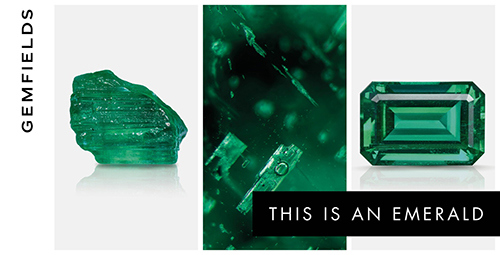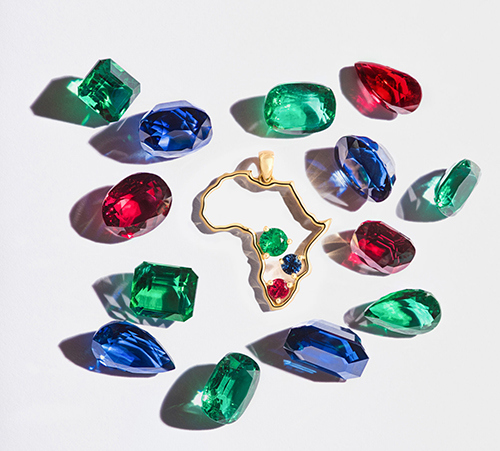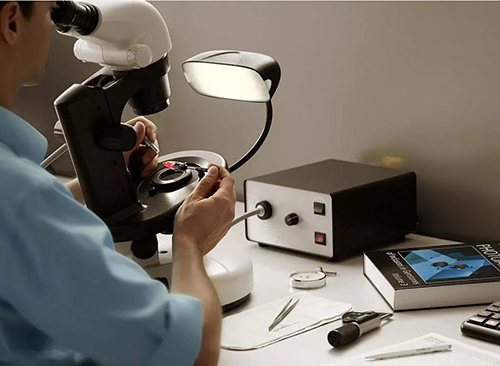Trust is the backbone of the jewelry industry, and grading reports are among the most powerful tools jewelers have to instill confidence in their customers. Such certification provides a widely recognized guide for determining the quality and value of gemstones. The better the quality of the gem, as authenticated by the report, the rarer the stone and the greater its value.
Know Your Gem’s Quality & Value
There is often confusion about terminology and the function of various professionals within the trade surrounding certification (or grading), authentication, and appraising.
- Authentication involves determining whether a diamond or gem is natural or synthetic and is often the first stage in the gemstone certification process.
- Grading/certification is the process of inspecting the stone and establishing its quality based on a set of comparable criteria.
- Appraisals are carried out to determine the value of the diamond or gem, generally based on the grading report.
It’s a common misconception among consumers that gem certification serves as an appraisal and vice versa. The two work in tandem with each other, but they are not the same. The primary role of grading reports is to install trust and confidence among those who trade colored gems and consumers through transparency and disclosures they provide.

Growing Demand for Gem Certification
There has been a notable increase in certification in the past decade or two as online gem trading has gained momentum, making it more necessary for both wholesale gemstones traders and consumers sourcing goods. Did the growth in online sales stimulate the need for grading or the increase in certification enable the rise in ecommerce?
It doesn’t really matter as both are true. Through certification there is far more information available about gemstones than before, providing the international gem trade with the transparency to source gemstones with confidence on platforms such as RapNet.
Tips for buying online
- Always verify who your supplier is. Ask for references and do background checks.
-
Validate the stone’s identity too. This can be done through report checks with the gem lab.
How Are Gemstones Graded?
When presented with a rough stone, the cutter’s task is to maximize the value of the resulting polished. However, unlike in diamonds which has a structured scale to determine the 4Cs – Cut, Carat weight, Color and Clarity, gemstone grades rely heavily on the natural characteristics of the stone.
That said, mining company Gemfields developed its own 7Cs guide of colored gemstones for consumers, comprising Color, Clarity, Cut, Carat, Certified report, Confidence and Character. Ultimately, it's the certified report that explains the other Cs and gives consumers the confidence they seek.
The first element of the grading analysis relates to determining which species and variety the gemstone belongs to:
-
The species is the broad category of gemstones based on chemical composition and crystal structure.
-
A variety is a subcategory of a species, based on color, transparency, or phenomena.
For example, among the big three gemstones, rubies and sapphires are varieties of the corundum species, while emeralds belong to the beryl species. Gem labs typically disclose this information on their reports.

(credit: Gemfields)
The lab will then establish whether the gemstone has undergone any treatments, such as heating, to improve its color or clarity. Such enhancements are common in the color gemstone industry and can be difficult to detect. Gemstone sellers – whether dealing within the trade or directly with consumers – are legally required to disclose any treatments, and the grading report is the most reliable source of this information.

-
Nomenclature and consistency are important in grading. If a lab has its own set of terminology, be sure to understand their scales and measures that you can explain them to your customer.
-
Make sure you understand all the information contained in the report. It's responsible practice for the supplier or seller to disclose and explain its contents to the gemstone buyer, especially when selling to consumers.
Treating Gems to Increase Value
Enhancements are common because color is the most critical consideration when assessing the quality and value of a gemstone. Color is defined by the following elements:
-
Hue—the dominant color family.
-
Saturation—the intensity or purity of the color.
-
Tone—the lightness or darkness of the color.
In colored gemstones, uniformity—the evenness of the color distribution—also impacts the value of the stone.

Tips for gemstone quality
-
Consider that each gem variety has different considerations when it comes to quality assessment.
-
Be aware of what factors are important in the stone’s particular market, and understand what aspects are important to you.
The Provenance Premium
That said, the country of origin greatly affects the value of many gemstones.
For example, an untreated sapphire from Kashmir typically sells at a premium compared to similar sapphires mined in other locations. Columbian emeralds are easily discernible, and their rich color and good clarity make them more desired than other emeralds.
Color gemstones from different regions have distinguishable gemological features that enable gemologists to determine their source location. Methods range from inclusion identification and analysis, assessing the geological formation and treatment history through spectroscopy—the study of the absorption and emission of light, and detecting the presence or absence of trace elements.
Origin is not evident in all gemstones. The Gemological Institute of America (GIA) provides origin reports for ruby, sapphire, emerald, Paraiba type tourmaline, red spinel and alexandrite only.
Color gemstones with source disclosure do, since stones from certain locations are considered better quality and add to their value.
Tips relating to source verification
-
The origin story of a diamond or gemstone can greatly enhance one’s engagement with a client or customer.
-
Source verification can also provide the ethical assurances that consumers and members of the global gemstones trade are increasingly demanding.
Leading Gemstone Labs
It’s important to emphasize that these assessments must be carried out by a reputable grading laboratory.
-
GIA (Gemological Institute of America) is arguably the most well-known gemological lab for gemstone certification among the leading gem labs. The GIA gemstone certification service offers two reports – the Colored Stone Identification Report and the Colored Stone Identification & Origin Report. The GIA also conducts research touching on all aspects of the gemstone market, whether at remote mining locations or at its labs, bringing a deeper understanding of rough and polished stones.
-
Gübelin Gem Lab, the Switzerland-based gem lab, is another authority in the authentication and grading of gemstones, and it has been at the forefront of determining origin through scientific analysis. Gübelin Gemmological Reports do not comment on the quality of a gem but aim to disclose the identity and authenticity of a stone and its geographic origin when possible, offering an opinion on the presence or absence of any treatments.
-
Gemological Science International (GSI) offers its Full Gemstone Examination Report (FGX), providing an analysis of the stone’s weight, shape, measurements, color and information about the presence or absence of treatments. GSI also offers a passport-size IGX Report, SGX Report in a letterhead format and the credit card-size MGX Report.
-
International Gemological Institute (IGI) uses state of the art technologies to determine naturally mined, laboratory grown or simulant origin of the stone’s it assesses, offering its Colored Stone Report after gemstone analysis.
In addition to their gemological services, these labs also have extensive educational programs and sources that are freely available. The wealth and breadth of material provides great insight into the fascinating gemstone market, and a glimpse into the community of gemstone miners, dealers, manufacturers, designers and jewelers that make the market tick.

At the heart of each transaction within that world is the certification that provides transparency and enables the trust to buy and sell with confidence.
Tips for working in the color gemstone market
-
Join an industry organization such as the American Gem Trade Association (AGTA) or International Gem Society to broaden your network within the trade and meet like-minded and trusted partners.
-
Gemstone trading networks, such as RapNet, also provide a platform through which to build a network. RapNet recently partnered with AGTA to provide a gemstone marketplace that facilitates 24/7 gem trading that is both safe and seamless.
-
Trade shows provide another opportunity to meet members of the trade, see the broad scope of gemstones, and understand the market more.



 RapNet Blog
RapNet Blog![Diamonds 6[1][1]](/media/2120/diamonds-6-1-1.png)